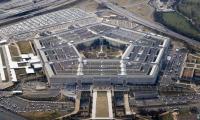US Secretary of Defence, Mark T. Esper, and Secretary of State, Michael R. Pompeo, visited India on October 26, barely a week before the US presidential elections. The duo met with their Indian counterparts, Defence Minister Rajnath Singh and the External Affairs Minister S. Jaishankar. Both countries signed a total of five agreements in the 2+2 Ministerial dialogue. Prominent among the bilateral agreements was the Basic Exchange and Cooperation Agreement (BECA).
Readers may be wondering what BECA is? Here is some information on this significant agreement. BECA will enable the partners to share high-end military technology, classified satellite data and critical information. It will help India get real-time access to American geospatial intelligence that will enhance the accuracy of automated systems and weapons like missiles and armed drones. Through the sharing of information on maps and satellite images, it will enable India access to topographical and aeronautical data, and advanced products that will aid in navigation and targeting.
The new bilateral agreement would access better Air Force-to-Air Force cooperation between India and the US. The facility will enable fighter aircraft to reach their targets efficiently and effectively. In a nutshell, BECA will provide Indian military systems with a high-quality GPS to navigate missiles with real-time intelligence to precisely target the adversary. In addition to the sailing of ships, flying of aircraft, fighting of wars, and location of targets, geospatial intelligence is also critical to the response to natural disasters.
The signing of BECA flows from inking of three other key pacts between the two countries which were identified as crucial to significantly expand the strategic ties. The first of the quartet is called the General Security of Military Information Agreement (GSOMIA), which was signed by the two countries in 2002. The GSOMIA provides for specific measures to ensure security standards for safeguarding critical information shared by the US with India. In a major move in 2016, the US had designated India a “Major Defence Partner” intending to elevate defence trade and technology sharing to a level commensurate with that of its closest allies and partners. The two countries inked the Logistics Exchange Memorandum of Agreement (LEMOA) in 2016 that allows their militaries to use each other’s bases for repair and replenishment of supplies as well as provide for deeper cooperation. LEMOA permits the militaries of the US and India to replenish from each other’s bases, and access supplies, spare parts and services from each other’s land facilities, air bases, and ports, which can then be reimbursed.
LEMOA has major advantages for both India and the US especially in naval cooperation. The strategic agreement enables the partners to expose their military and strategic assets such as warships and other facilities to each other, hence it necessitates the building of mutual trust. It took almost a decade to negotiate LEMOA, and the exercise in a sense bridged the trust deficit between India and the US, and paved the way for the other two pacts.
There is a history to it. India had provided ad hoc logistics support to the US in the past, when it facilitated the refueling of American aircraft in Bombay during the first Gulf War in 1991, and opening Indian ports to US warships during the war on terror after 9/11.
India and the U.S. signed another pact called COMCASA (Communications Compatibility and Security Agreement) in 2018 that provides for interoperability between the two militaries and provides for sale of high end technology from the US to India. COMCASA was signed in September 2018, after the first 2+2 dialogue during which then External Affairs Minister Sushma Swaraj and then Defence Minister Nirmala Sitharaman met the visiting Secretary of State Michael R Pompeo and then Secretary of Defence James N Mattis.
The pact allows the US to provide India with its encrypted communications equipment and systems so that Indian and US military commanders, and the aircraft and ships of the two countries, can communicate through secure networks during times of both peace and war.
The signing of COMCASA paved the way for the transfer of communication security equipment from the US to India to facilitate “interoperability” between their forces — and potentially with other militaries that use US-origin systems for secure data links.
While LEMOA is tantamount to the exposé of each other’s valuable assets, COMCASA points towards the reliance on sharing encrypted systems by the two militaries. The latest in the quartet — BECA, means the countries can share highly classified information in real time.
India, which was dependent on Russia for its military hardware, is now diversifying. The Indian defence establishment is using the C-17 Globemaster III for military transport, Boeing’s Chinook CH-47 as heavy-lift helicopters, Boeing’s Apache as tank-killers, P-8I Poseidon for overland reconnaissance, and Lockheed Martin’s C-130J for airlifting troops.Both the US and India are sovereign nations, which are free to seek military and strategic alliances. Pakistan, which seeks military balance in the region, will have to wait for the results of the 2020 US Presidential elections to further its cause or seek other partners to enhance its strategic capacity.
PKI urges govt to take action against Akhtar Mengal, Mahrang, and their associates to eliminate anti-national elements
Barrister Saif reaffirms that his top priority was economic development and political stability of country
Critics accuse Norway's Partiet Sentrum party of "using a possible Peace Prize nomination to win votes"
Minister acknowledges efforts of Chaudhry Shujaat Hussain in maintaining peace in Balochistan
Waqas describes PM Shehbaz’s three-year tenure as one of darkest periods in country’s history
HED asked to ensure that all universities under its jurisdiction take necessary actions to prevent harassment







